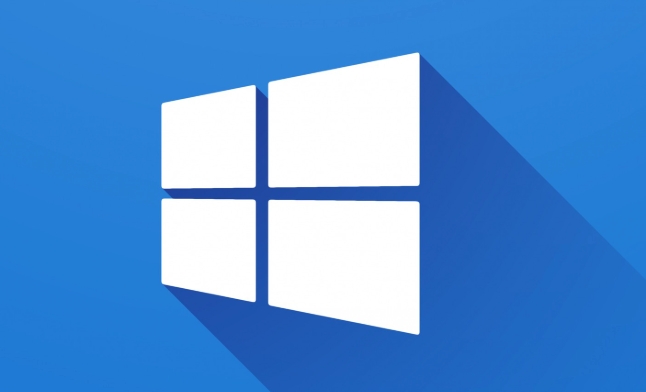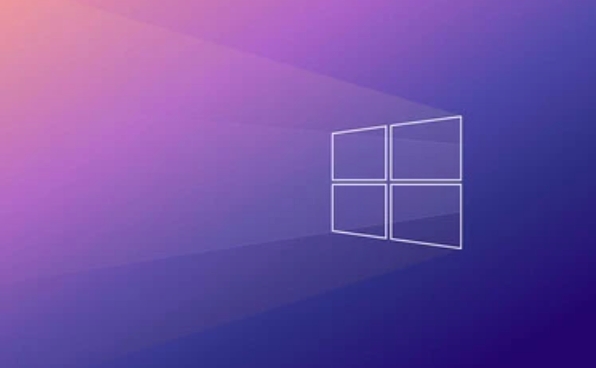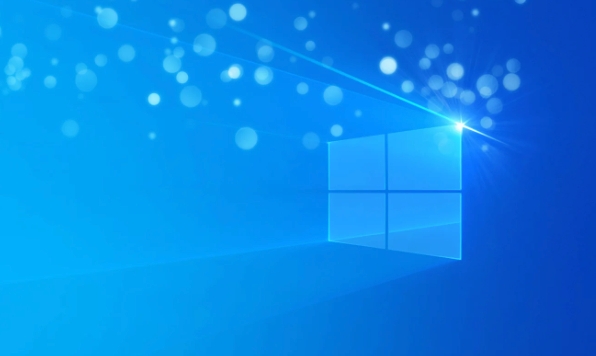Where does Windows save temporary installation files
Jul 29, 2025 am 03:34 AMThere are four main locations for Windows to save temporary installation files, namely the user-specific Temp folder, the SoftwareDistribution folder of Windows Update, the system installer cache folder, and the temporary files generated by SFC or DISM tools. 1. The user Temp folder (C:\Users\username\AppData\Local\Temp) is used to store temporary data of applications and installers. It can safely delete old files but avoid deleting the files in use; 2. The Windows Update temporary folder (C:\Windows\SoftwareDistribution\Download) contains the update package cache. Before deleting, you need to stop the Windows Update service and restore it after restarting. You can also use the disk cleaning tool; 3. The installer cache (C:\Windows\Installer) contains important installation files. It is recommended to operate with caution to avoid manual deletion to avoid affecting program repair or uninstallation; 4. SFC or DISM tool temporary files (C:\Windows\Logs\CBS) contain system repair logs and temporary files, and old logs can be safely deleted. Regular cleaning of these files helps free up disk space and keep the system running smoothly.

Windows saves temporary installation files in several locations depending on the type of installation or update being performed. These files are typically used during software installations, Windows updates, or system operations and are often left behind unless cleaned up properly.

1. System Temp Folder (User-Specific Temporary Files)
One of the most common places where Windows stores temporary installation files is in the user-specific Temp folder. This folder is used by applications and installers to store temporary data while a program or update is being installed.

- Path:
C:\Users\username\AppData\Local\Temp - Notes: Replace "username" with your actual Windows username. This folder can accumulate a lot of leftover files from failed or incomplete installations.
What to do :
- You can safely delete files in this folder if no major installation or update is currently running.
- Use Disk Cleanup or manually browser the folder to remove old files.
- Be careful not to delete files that are currently in use (you might get access denied errors).
2. Windows Update Temporary Files (SoftwareDistribution Folder)
When Windows updates are downloaded and installed, they're stored temporarily in a specific folder used by the Windows Update service.

- Path:
C:\Windows\SoftwareDistribution\Download - Notes: This folder contains cached update packages. Clearing it will free up space but may cause Windows Update to re-download some files later.
What to do :
- Stop the Windows Update service before deleting files.
- Delete everything inside the Download folder.
- Restart the Windows Update service afterward.
You can also use the built-in Disk Cleanup tool with the “Windows Update Cleanup” option selected.
3. Installer Cache (Program-Specific or MSI Installers)
Some software installers, especially those based on Microsoft Installer (MSI), leave behind temporary files in the system's installer cache.
- Path:
C:\Windows\Installer - Notes: This folder contains important cached installer files used for repair or uninstall purposes. Deleting files here could break installed programs.
What to do :
- Avoid manually deleting files in this folder unless you're absolutely sure what you're doing.
- Use tools like CCleaner or Disk Cleanup with caution here.
- If you're uninstalling software, some cleanup tools may offer safe removal options.
4. Temporary Files from SFC or DISM Tools
If you've used system file checkers like sfc /scannow or DISM commands, temporary files may be generated as part of the process.
- Path:
C:\Windows\Logs\CBS - Notes: This folder contains logs and sometimes temporary files related to system file repairs.
What to do :
- Review the logs if you're troubleshooting issues.
- Old log files can be deleted safely, but avoid removing anything if a system scan or repair is ongoing.
In general, these temporary installation files can take up significant disk space over time. Cleaning them periodically helps keep your system running smoothly without risking performance or stability.
Basically that's it
The above is the detailed content of Where does Windows save temporary installation files. For more information, please follow other related articles on the PHP Chinese website!

Hot AI Tools

Undress AI Tool
Undress images for free

Undresser.AI Undress
AI-powered app for creating realistic nude photos

AI Clothes Remover
Online AI tool for removing clothes from photos.

Clothoff.io
AI clothes remover

Video Face Swap
Swap faces in any video effortlessly with our completely free AI face swap tool!

Hot Article

Hot Tools

Notepad++7.3.1
Easy-to-use and free code editor

SublimeText3 Chinese version
Chinese version, very easy to use

Zend Studio 13.0.1
Powerful PHP integrated development environment

Dreamweaver CS6
Visual web development tools

SublimeText3 Mac version
God-level code editing software (SublimeText3)

Hot Topics
 How to change the system display language for all users in Windows
Jul 31, 2025 am 08:18 AM
How to change the system display language for all users in Windows
Jul 31, 2025 am 08:18 AM
InstallthedesiredlanguagepackviaSettings→Time&Language→Language®ion,ensuring"SetasmyWindowsdisplaylanguage"isselected.2.Changethesystemdisplaylanguageinthesamemenuandrestart.3.OpenControlPanel→Region→Administrativetab,click"
 How to reset the Microsoft Store in Windows
Jul 31, 2025 am 08:23 AM
How to reset the Microsoft Store in Windows
Jul 31, 2025 am 08:23 AM
ResettheMicrosoftStoreviaSettingsbygoingtoApps>Installedapps,selectingMicrosoftStore,clickingAdvancedoptions,thenRepairandResetifneeded.2.Ifthatfails,re-registertheStoreusingPowerShellasadminwiththecommand:Get-AppXPackage-NameMicrosoft.WindowsStor
 How to install Windows on a Mac without Boot Camp
Jul 31, 2025 am 11:58 AM
How to install Windows on a Mac without Boot Camp
Jul 31, 2025 am 11:58 AM
Without BootCamp, installing Windows on Mac is feasible and works for different chips and needs. 1. First check compatibility: The M1/M2 chip Mac cannot use BootCamp, it is recommended to use virtualization tools; the Intel chip Mac can manually create a boot USB disk and install it in partition. 2. Recommended to use virtual machines (VMs) for M1 and above chip users: Windows ISO files, virtualization software (such as ParallelsDesktop or UTM), at least 64GB of free space, and reasonably allocate resources. 3. IntelMac users can manually install it by booting the USB drive: USB drive, WindowsISO, DiskU is required
 How to reset the TCP/IP stack in Windows
Aug 02, 2025 pm 01:25 PM
How to reset the TCP/IP stack in Windows
Aug 02, 2025 pm 01:25 PM
ToresolvenetworkconnectivityissuesinWindows,resettheTCP/IPstackbyfirstopeningCommandPromptasAdministrator,thenrunningthecommandnetshintipreset,andfinallyrestartingyourcomputertoapplychanges;ifissuespersist,optionallyrunnetshwinsockresetandrebootagain
 How to install Windows on a Mac
Jul 31, 2025 am 10:07 AM
How to install Windows on a Mac
Jul 31, 2025 am 10:07 AM
ForIntel-basedMacs,useBootCampAssistanttocreateadual-bootsystemwithWindowsbypreparingaUSBdrive,downloadingaWindowsISO,partitioningthedisk,andinstallingWindowsalongsidemacOSwithsupportdrivers.2.ForAppleSiliconMacs(M1/M2/M3),usevirtualizationsoftwareli
 Step-by-step guide to installing Windows from an ISO file
Aug 01, 2025 am 01:10 AM
Step-by-step guide to installing Windows from an ISO file
Aug 01, 2025 am 01:10 AM
DownloadtheWindowsISOfromMicrosoft’sofficialsite.2.CreateabootableUSBusingMediaCreationToolorRufuswithaUSBdriveofatleast8GB.3.BootfromtheUSBbyaccessingthebootmenuoradjustingBIOS/UEFIsettings.4.InstallWindowsbyselectingcustominstallation,choosingtheco
 A guide to custom Windows installation options
Aug 01, 2025 am 04:48 AM
A guide to custom Windows installation options
Aug 01, 2025 am 04:48 AM
Choose"Custom:InstallWindowsonly(advanced)"forfullcontrol,asitallowsacleaninstallthatremovesoldissuesandoptimizesperformance.2.Duringsetup,managepartitionsbydeletingoldones(afterbackingupdata),creatingnewpartitions,formatting(usingNTFS),ors
 How to manage AppLocker policies in Windows
Aug 02, 2025 am 12:13 AM
How to manage AppLocker policies in Windows
Aug 02, 2025 am 12:13 AM
EnableAppLockerviaGroupPolicybyopeninggpedit.msc,navigatingtoApplicationControlPolicies,creatingdefaultrules,andconfiguringruletypes;2.Createcustomrulesusingpublisher,path,orhashconditions,preferringpublisherrulesforsecurityandflexibility;3.Testrules






